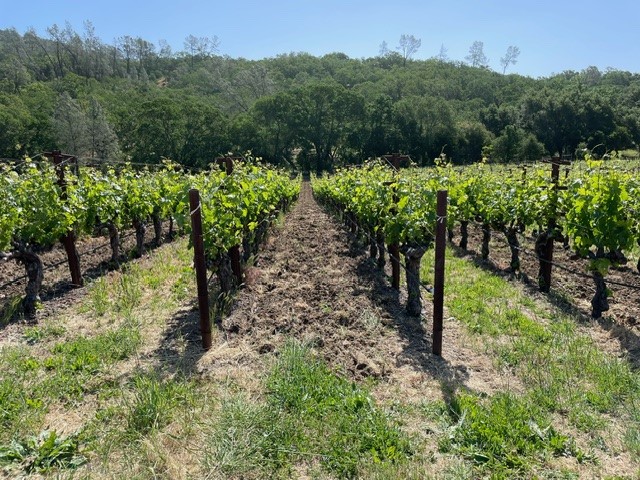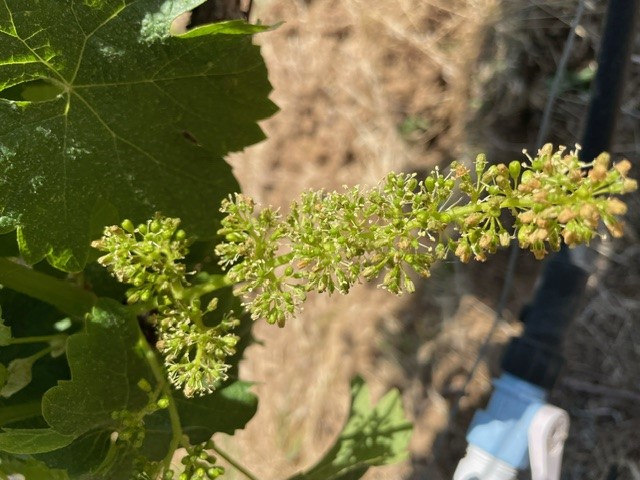Neyers Vineyards Bruce's Journal
Special Occasion Wines
By Bruce Neyers
Wednesday 5th June, 2024
Special Wines Don’t Always Need Special Occasions
I’m as guilty as others in thinking that we need a special occasion to open a special wine. Barbara suggested I think differently at our recent Mother’s Day celebration. She has always been reluctant to dine out on Mother’s Day, insisting that it was more enjoyable for her to cook dinner at home for her family. We always make it an evening replete with some fresh flowers, a glass of Champagne, a fine meal, and some good wine. I started planning for this past Mother’s Day by calling Paul Stokey – the talented owner of Tesoro Flowers in Napa, who for years has done special occasion flowers for Barbara – and asked him to provide us with one of his unique floral arrangements. Dinner began with a green salad with goat cheese discs, breaded and sautéed in olive oil, then topped with sourdough croutons. I grilled a flank steak that had been marinated in Barbara’s soy and Balsamic marinade. It was accompanied by her ‘Crispy Potato Pie’, a dish similar to one we were served years ago at a favorite restaurant in France. I don’t know exactly how she does the potatoes, but they are sliced impossibly thin, soaked overnight in cold water to remove the starch, sautéed in a cast iron pan, originally in olive oil, then finished in sweet butter. Two of our kids would be joining us, so I selected a bottle of the 2014 ÂME Vineyard Cabernet Sauvignon. It’s a wine from the grapes grown at the top of the hill on our Conn Valley Ranch, a parcel that David Abreu developed for us in 1998. In 2014, these were the last grapes harvested. We picked them on October 6. That long, cool autumn allowed them to completely ripen, and while the yield was small, the wine has always been a favorite of mine. ÂME is the French word for ‘soul’, and contains the first name initial of our three children, Alexandra, Michael and Elizabeth.
As an afterthought, I added a bottle of the 2019 ÂME Cabernet Sauvignon to compare it to the 2014 vintage. The grapes in 2019 were picked on October 11. The crop was 9.69 tons, from the 3.5 acres of vines, compared to 10.04 tons from the 2014 harvest. The picking dates were almost identical, as were the crop sizes. The wines were both beautiful, and Lizzie mentioned that she enjoyed seeing the similarities in both vintages. I found them attractive in several ways, and while the 2014 has begun to develop an exotic bouquet of earth and wild berries, the 2019 ÂME shows the lovely fruit-driven side of the wines from this vineyard. The budwood came from Abreu’s ‘Thorvilas Vineyard’, plant material believed to have originated in Margaux.
At the end of the meal, Barbara simply said, “Let’s drink the ÂME more often.” She’s right. We won’t be having it just on special occasions now.


The potato dish was one Barbara learned from our first visit to a wonderful old French restaurant in Burgundy. In the winter — during black truffle season — they will place thin slices of truffle between the potato slices, then cook it as a ‘pie’, but sautéed in butter and olive oil. It’s then sliced into wedges.

Mother’s Day dinner always starts with a glass of Champagne, and a toast next to a fresh floral arrangement from our old friend Paul Stokey at Tesoro Flowers in Napa.

The Cabernet Sauvignon vines are just now beginning to ‘Flower’, the term used to indicate the process of self pollination, and the formation of the year’s grape crop. Those small, green, BB-like berries (above) will lose their covers, exposing the sexual apparatus, and the berries pollinate themselves. It’s a crucial time of year, as it determines the ultimate crop size. The ‘flowers’ are fragile, so high winds, excessive heat or cold, and especially rain can be disastrous now for this process that takes about a week to be completed. After that, the fertilized berries — seeds — will slowly develop into grapes.
Photo by Lizzie Neyers Mix

Roses are an important part of any viticulture project, and so they are at Neyers Vineyards. This is the pathway back to the central vineyard on our ranch, the parcel we call ‘The Hill’. The vines are a mix of Merlot and Cabernet Sauvignon, most of them planted in 1992.
Photo by Lizzie Neyers Mix


